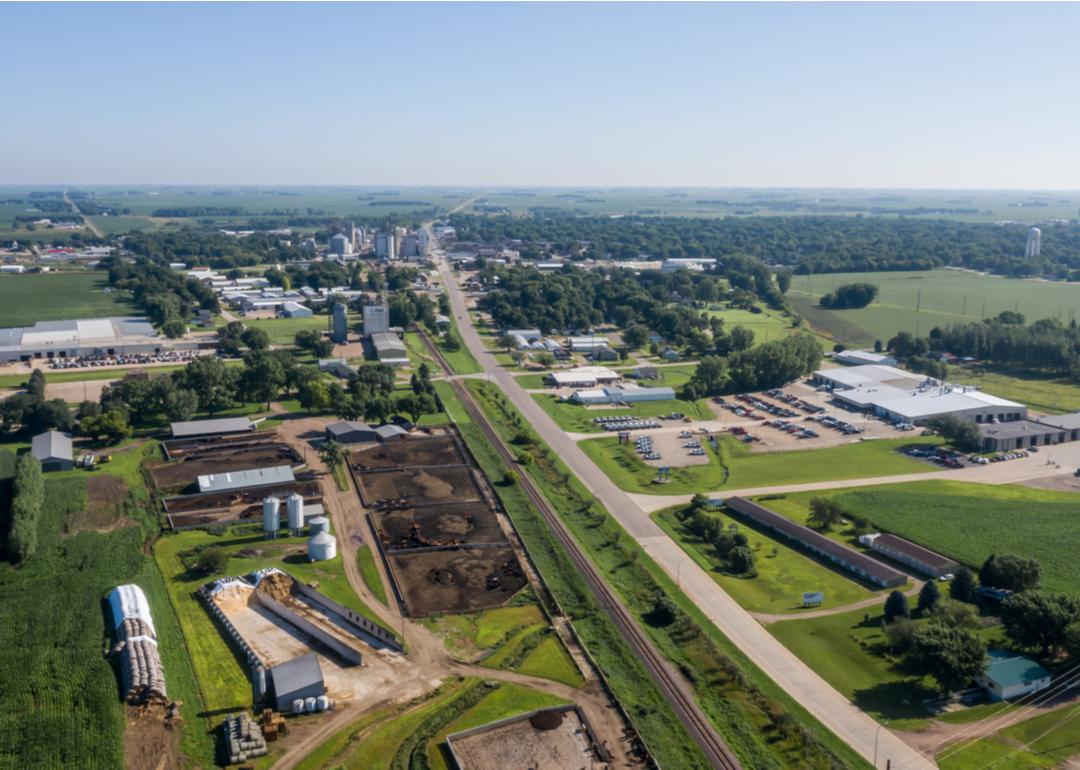
This story originally appeared on Simply Business and was produced and distributed in partnership with Stacker Studio.
What to know about workers' compensation in Iowa
Workers’ compensation, which can provide cash and medical care to employees injured on the job, and benefits to survivors in cases of a work-related death, began with a federal program in 1908. It gave benefits to civilian workers whose jobs were hazardous and became the first kind of social insurance established across the United States.
By 1916, the rest of the federal workforce was covered. States meanwhile were enacting their workers’ compensation laws. All but six states and the District of Columbia had them by 1921.
Today, programs exist in all 50 states, the District of Columbia, Puerto Rico, and the U.S. Virgin Islands.
The details of each program vary by state. Four states—Ohio, North Dakota, Washington and Wyoming—require insurance be obtained through a state-administered fund rather than through a private insurer. Another option is to self-insure for approved businesses. Most states require some businesses to provide coverage and can levy substantial fines for failing to comply. South Dakota and Texas leave the choice to businesses, although Texas makes an exception for construction companies with a government contract.
Simply Business reviewed rules, statistics, and other information about workers’ compensation insurance—including the comprehensive breakdown by the National Federation of Independent Business—to offer a breakdown of what workers’ comp requirements in each state. Rules are subject to updates periodically, so it’s important to stay up-to-date based on your trade and location.
Workers' Compensation in Iowa
Most businesses in Iowa are required to have workers’ compensation insurance. Those who are exempt include domestic or casual workers who made less than $1,500 in the year before they were injured. Some agricultural workers also are excluded, those who worked for an employer whose cash payroll was less than $2,500 in the year before the injury, those who are exchange labor, and those who are officers in a family farm corporation as well as their close relatives. Violators may have to pay a penalty of up to $1,000 and an award of up to 50% more in benefits.
Workers’ Compensation Benefits, Costs, and Coverage, an October 2021 report from the National Academy of Social Insurance, found that total benefits paid to employees rose by 0.4% nationwide from 2015 to 2019. Cash benefits rose by 2%, but medical benefits fell by 1.1%. Standardized benefits fell— cash by 14% and medical benefits by 16.7%—over the same period.
Keep reading to see what workers' compensation looks like for other states in your area.
Workers' Compensation in Illinois
Illinois mandates coverage for virtually all businesses, particularly hazardous occupations such as construction and trucking at a construction site. Sole proprietors may exempt themselves. Also exempt are some immediate family members who live with an employer, relatives of employers who are corporate officers, and relatives who work for an agricultural business that hires fewer than 400 days of labor per quarter during the preceding calendar year. Employers who lack coverage can be fined up to $500 a day, with a $10,000 minimum fine.
Workers' Compensation in Minnesota
Minnesota is among the states that specify noncitizens are eligible for workers’ compensation coverage. All employers are required to provide the coverage, even one with only one part-time employee. The exemptions apply to fewer workers than in some other states. They include sole proprietors, partners, officers of some corporations, some relatives, and some managers of limited liability companies. Employers that do not provide coverage could have to pay a penalty of up to $1,000 for each employee for each week of not being insured.



